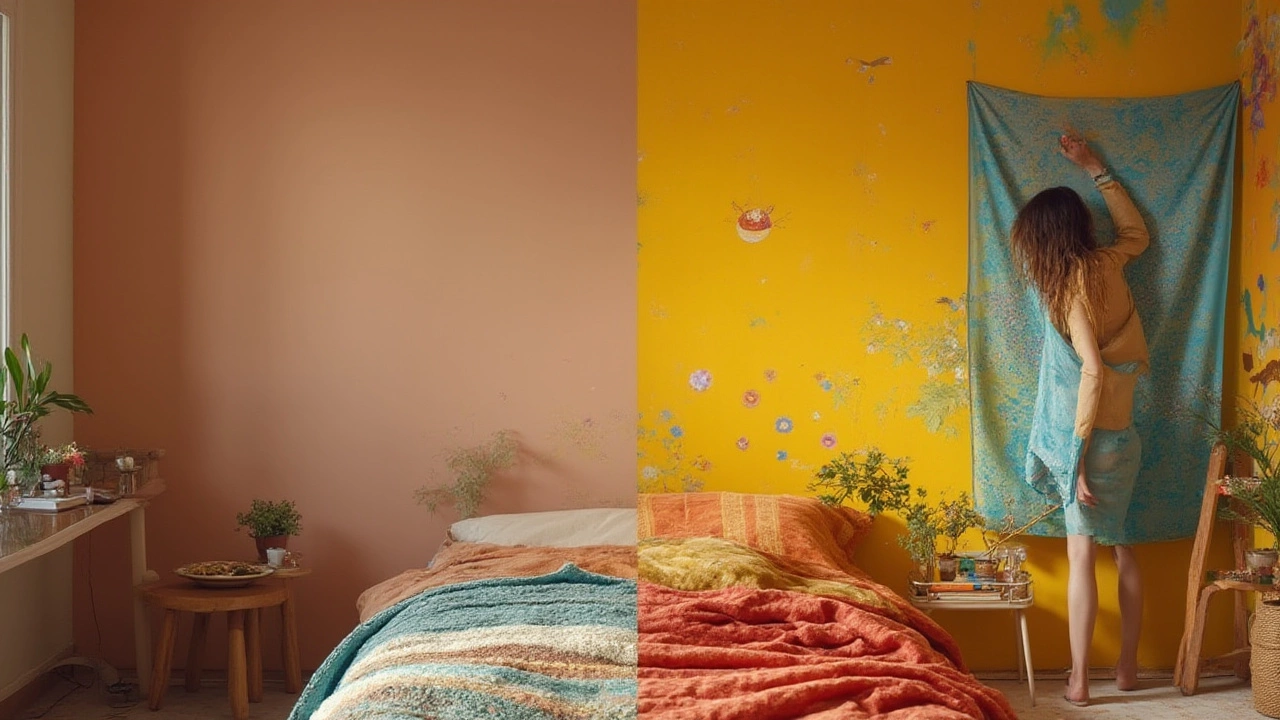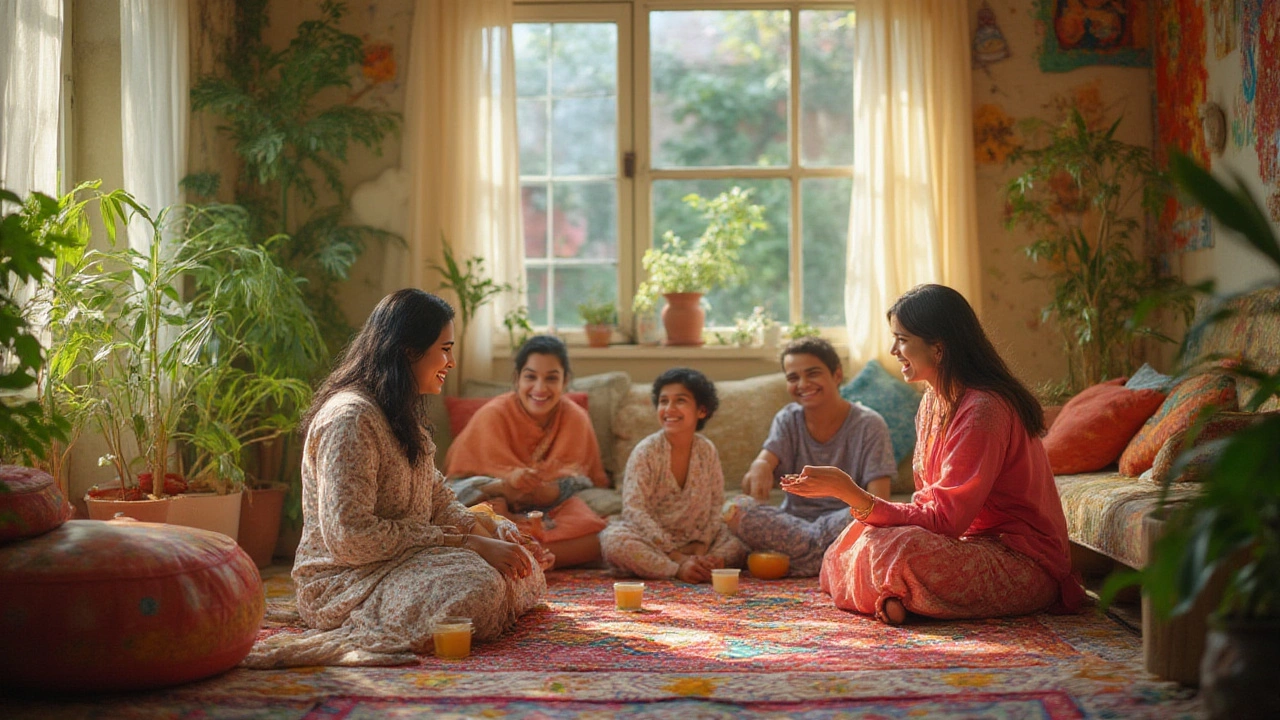You’ve probably walked into a room that felt so lifeless it might as well have been preserved in a museum of boredom. White walls, bare windows, maybe a lonely sofa. It’s the kind of space that’s less ‘inviting’ and more ‘waiting-room chic.’ But here’s the thing—any room, no matter how bland, can flip into a place that feels alive and personal. Let’s get hands-on with the simple, research-backed ways you can turn a dead space into somewhere you actually want to hang out.
Why Do Rooms Feel Dull? Understanding the Basics
It’s not just about paint color, though that counts. The real root of a boring room is a lack of visual stimulation and personality. Researchers from the University of Texas found in a 2020 study that spaces with low variation in color, texture, and lighting are often described as less inviting and harder to relax in. People crave a little stimulation—it’s wired in us.
If your room feels off, check if you’re missing one of these three things: color, layers, or focal points. Empty walls with one paint shade can feel cold and sterile—fact. Rooms with only big-box furniture and no personal items don’t tell your story. Flat lighting from a single ceiling fixture can make even the fanciest furniture look bland.
Believe it or not, your mood gets a boost from the way your home looks. In fact, the Environmental Psychology Journal published a piece in 2022 highlighting how a visually engaging space improves focus, energy, and even happiness. Think about that: a splash of color or some quirky decor isn’t just nice window dressing. It’s mood medicine. Knowing the key triggers of a dull room helps you fix them.
Small Changes with Big Impact: Color, Textiles, and Art
You don’t have to tackle renovations or spend big to shake things up. Ever notice how a bright yellow pillow on a grey couch suddenly wakes up the whole living room? That’s color theory doing its work. Try this: introduce one bold accent color. Experts in interior design say even a single pop—like a crimson throw or emerald vase—can dramatically shift energy.
Textiles are game changers that people overlook. Swap out plain curtains for lively prints or thicker materials. According to a Consumer Report from 2023, 67% of people felt their homes looked "richer" after they added textured throws or patterned rugs. Rugs divide space and add instant warmth. Layering a patterned rug over a big, bland carpet—even if it breaks the ‘rules’—can shake things up without lifting a paintbrush.
Now, let’s talk about art. You don’t need a Monet. Family photos, shadow boxes, or even a framed concert ticket tell your story. Art experts say that mixing media—photographs, canvas prints, found items—creates visual layers that feel lived-in and thoughtful. The secret? Go big. One oversized art piece draws eyes, anchors everything, and instantly adds character. If you can’t afford art, DIY it—a splash of color on canvas with random brush strokes can do wonders.
If you’re not sure where to start, think of how you dress up for an event: a bright tie here, textured shoes there, maybe a cool watch. Apply that to your room. Mix colors, play with patterns, and don’t be afraid of a little clash. Rooms that feel too matched often look lifeless; imperfection brings charm.

Lighting: The Fastest Way to Transform Mood
The biggest mood-killer in a room? Flat, overhead lighting. Real estate agents swear by lamps and layered lighting because it makes a room feel richer and more inviting instantly. According to a 2024 Houzz survey, 57% of people reported loving their rooms more after adding three light sources instead of one.
There are a few tricks here. Floor lamps bounce light off ceilings and make the room feel taller. Table lamps create pockets of coziness, great for reading or just chilling out. String lights or LED tape—especially under shelves or behind TV units—add glow without feeling harsh. Don’t forget dimmers. Being able to change light intensity puts you in control of the mood.
Natural light is the gold standard. Remove heavy window treatments or swap them for something sheer. A study from Harvard’s Sleep Lab shows people sleep, work, and relax better in spaces filled with sunlight. Even mirrors can help here. Position them to reflect window light into darker corners, which makes a space look bigger and brighter.
Want some numbers? Here’s a quick look at lighting’s impact:
| Light Source | Average Mood Rating* |
|---|---|
| Overhead Only | 3.5/10 |
| Overhead + 2 Lamps | 7/10 |
| Natural + Lamps | 8.2/10 |
*Survey of 320 homeowners by MoodSpaces, 2024
Just adding a lamp or opening curtains can make a huge difference. Light changes the game—quick, easy, and cheap.
Adding Personality: Storytelling Through Decor and Objects
What makes a room feel alive isn’t copying something from a catalog. It’s your stamp—your travels, hobbies, quirks. That’s what gets people’s attention. Start by bringing in items that mean something. Maybe display that weird statue you picked up thrifting, or line up a few dog-eared books on a floating shelf. Those details invite conversation.
Plants are a classic trick. There’s real data behind it: NASA’s Clean Air Study found houseplants filter toxins, but that’s not even the best part. Greenery adds movement, texture, and literally grows with your space. Pothos and snake plants are nearly impossible to kill—great for anyone who worries about being a plant murderer.
Don’t underestimate scent, either. Smell is a powerful emotional trigger. A study published in Frontiers in Psychology in 2019 showed certain home scents (like citrus or lavender) increased positive feelings about a space by up to 40%. Candles, diffusers, or fresh flowers aren’t just “extras”—they shape experience.
Let’s get specific. If you’re into music, mount a vintage record player, stack your favorite albums. Love sports? Frame memorable tickets or jerseys. Even kitchen tools tell a story: arrange copper pots or colorful mugs on open shelves, and the room feels used, loved, lived-in.
Don’t shy away from mixing old and new. Maybe your grandma’s chair with a modern side table, or a thrift-store lamp painted neon green. Each piece brings a memory, a bit of fun, and keeps the space evolving. If you love to change things up, collect small pieces and rotate them. That seasonal change can keep your space fresh and interesting all year.
Here’s a checklist if you feel stuck:
- Add at least one personal photo or object in a key spot
- Pick one living thing (plant, flowers)
- Layer in a scent you love
- Swap one mass-market object for something vintage or handmade
Transforming a dull room doesn’t have to mean blowing your paycheck or hiring a designer. Grab a bright pillow, change the lighting, and bring in what you care about. Suddenly, you’ve made a place that feels like home. Nobody wants to be stuck somewhere soul-sucking—so don’t be afraid to tweak, swap, and experiment until your place feels truly yours. Go grab that paint sample or quirky lamp, and see how quickly things change. Every room deserves some life.

